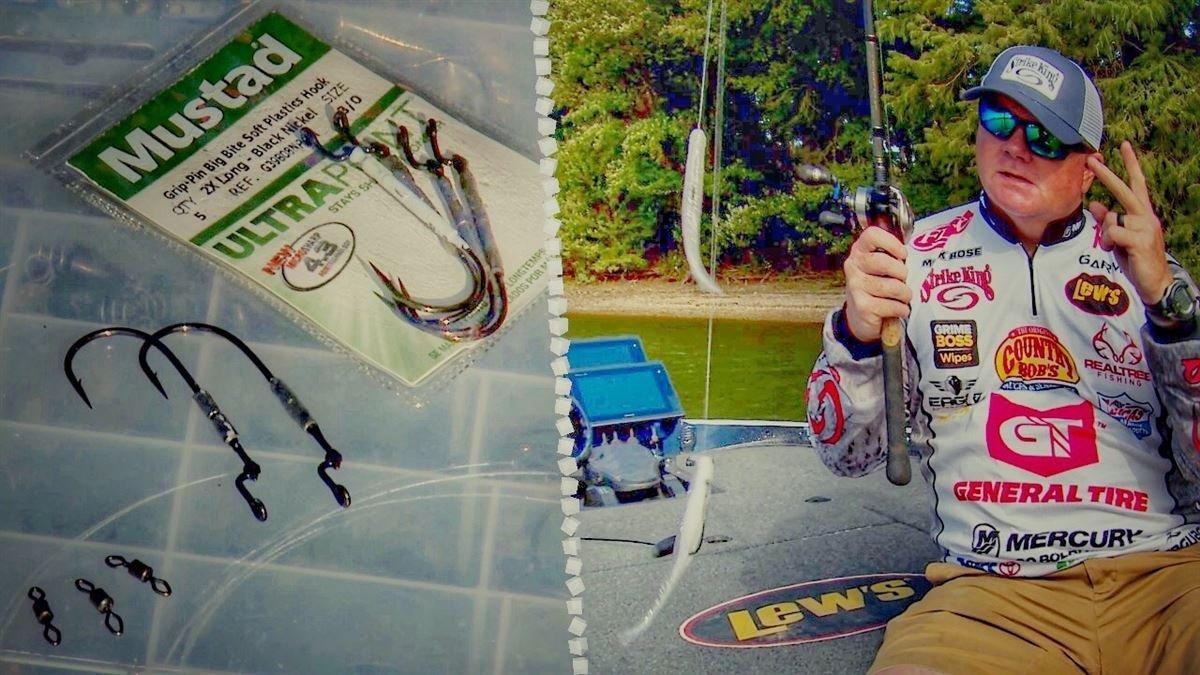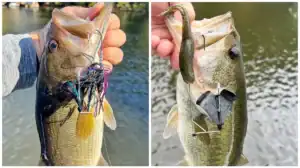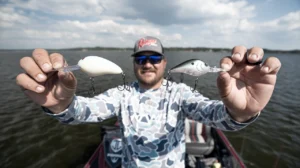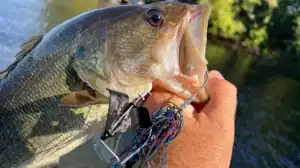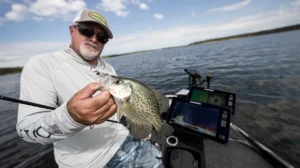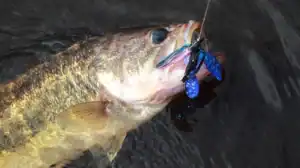The donkey rig aka double fluke rig pairs two fluke-style soft plastic jerkbaits on a single mainline to create the illusion of a baitfish school. Here’s how to rig it using basic terminal tackle and a little knowledge.
In the upper video Mark Rose shares his preferred terminal tackle for rigging the system. Key to the setup is making leaders of two different lengths with Mark opting for one around 20-inches and the other around 14-inches — this nearly eliminates fouling. Slide whichever leader you want up the mainline, then tie on the second leader, which serves as a stopper for the first. Lastly, Mark Texas rigs soft jerkbaits and ops to leave the hooks pushed through and exposed when fishing clean areas.
FEATURED PRODUCT:
Donkey Rig – What it looks like underwater
The double fluke rig aka donkey rig is one of the finest presentations on lakes where bass feed heavily on suspended baitfish. It originated on the blueback herring lakes of the south but its use has spread throughout the country (where legal). We stuck a camera below the water to gain a better understanding of why this double fluke setup dominates where bass prey heavily on suspended baitfish.
The aha moment comes quickly. Few lures can beat the realism of a soft plastic jerkbait on the move, in this case, the legendary Zoom Super Fluke. Similar to an Alabama Rig, the darting erratic nature of two tethered flukes gives the appearance of a baitfish school – a target worthy of the chase. The Texas-rigged soft jerkbaits excel at covering water quickly, be it open water or grass, while the darting baitfish action is a proven trigger for largemouth, smallmouth and spotted bass.
Be sure to check your state fish and game laws before fishing the double fluke rig. If it’s legal, it should be a worthy addition to your bag of tricks.
